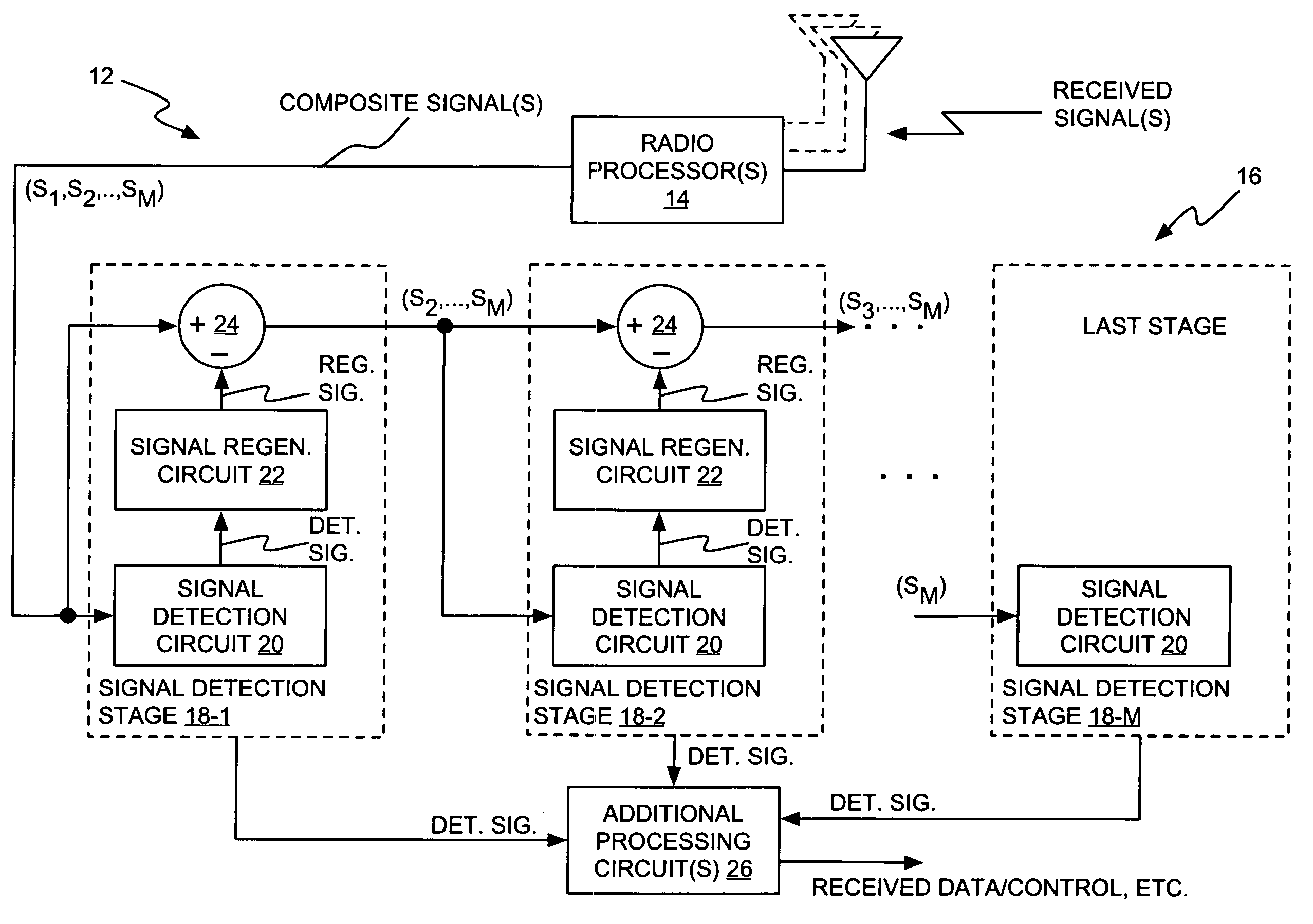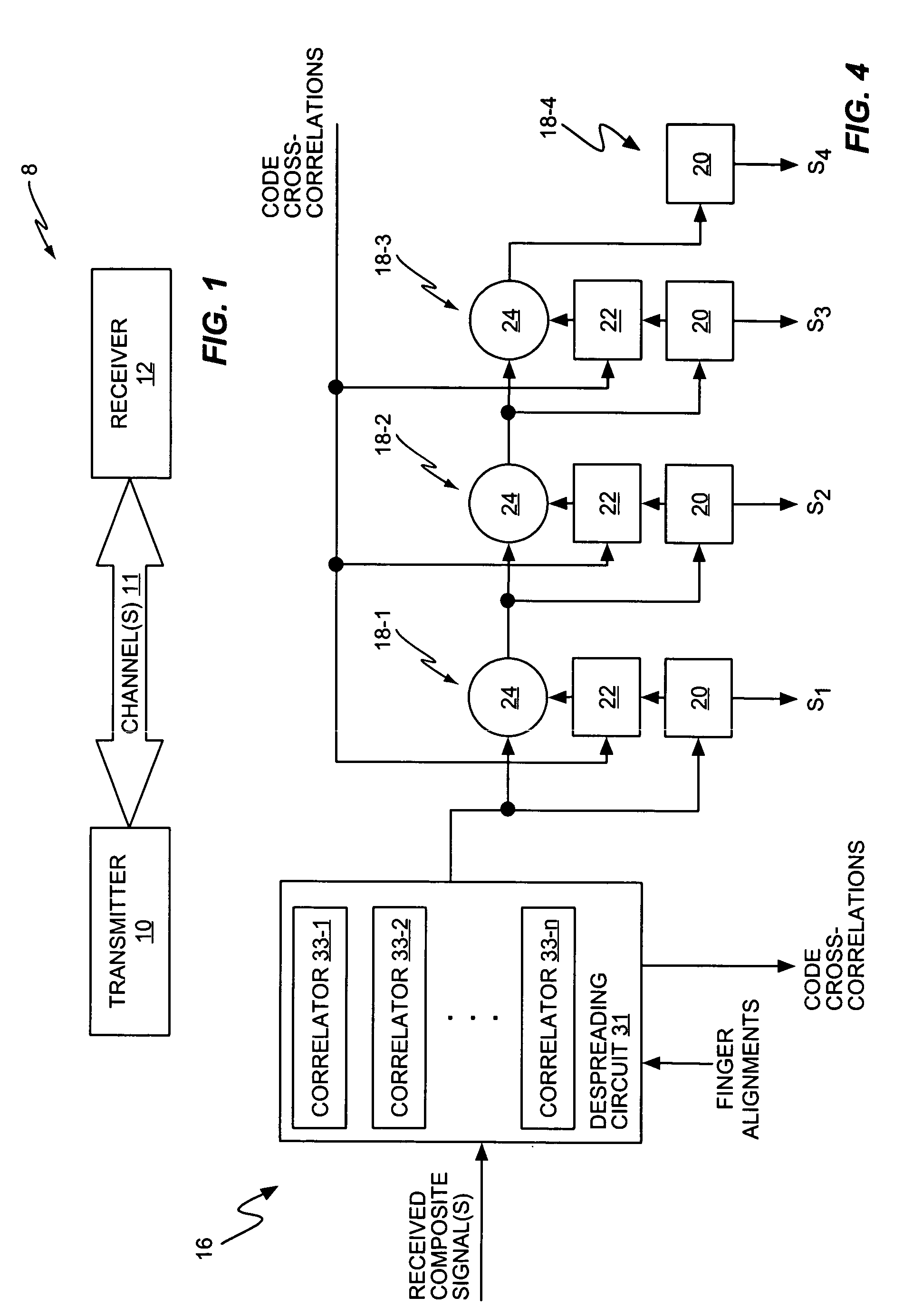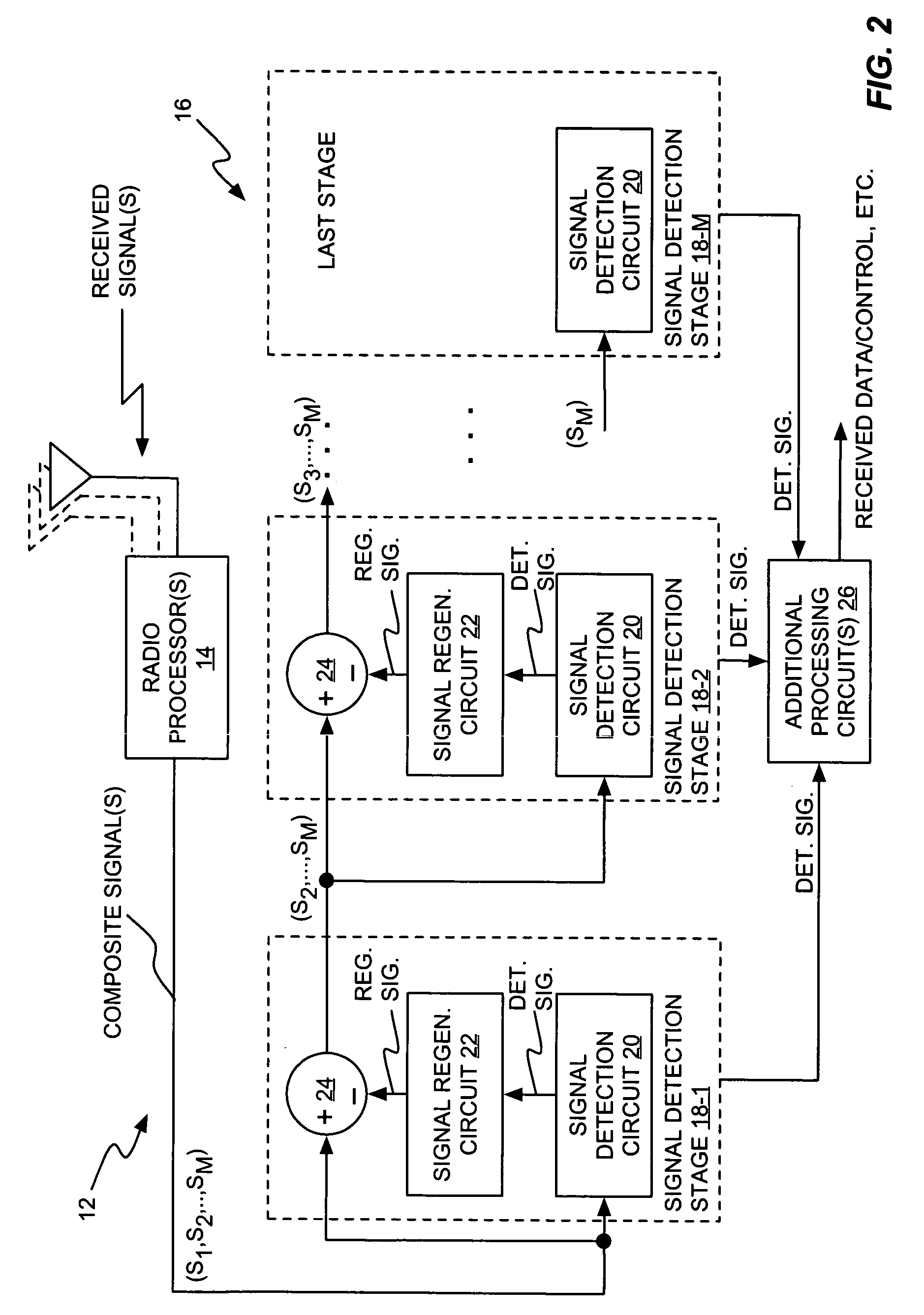Successive interference cancellation in a generalized RAKE receiver architecture
a receiver architecture and receiver technology, applied in the direction of multi-channel communication, transmission, electrical equipment, etc., can solve the problems of limiting the capacity of cdma systems, conventional single-user receivers may not be able to detect signals, and the complexity of optimal mud systems increases exponentially with the number of users
- Summary
- Abstract
- Description
- Claims
- Application Information
AI Technical Summary
Benefits of technology
Problems solved by technology
Method used
Image
Examples
Embodiment Construction
[0024] Discussing and illustrating details in the many exemplary embodiments of the present invention necessarily involves a certain level of complexity. Such complexities are explored in the exemplary details given later herein but an initial understanding of the present invention's broader aspects may be gained with reference to the relatively simple diagram given in FIG. 1. However, before discussing FIG. 1, it should be understood that the present invention broadly involves the application of GRAKE-based signal detection in combination with successive interference cancellation.
[0025] As used herein the term “GRAKE” connotes a RAKE combining circuit and / or combining method that calculates impairment correlations between the streams of despread values being RAKE combined by the circuit. Such impairments arise, for example, because of MAI, aggressive spreading code reuse, channel fading conditions, etc. Note that own-cell MAI may be accounted for as interference, while other-cell ...
PUM
 Login to View More
Login to View More Abstract
Description
Claims
Application Information
 Login to View More
Login to View More - R&D
- Intellectual Property
- Life Sciences
- Materials
- Tech Scout
- Unparalleled Data Quality
- Higher Quality Content
- 60% Fewer Hallucinations
Browse by: Latest US Patents, China's latest patents, Technical Efficacy Thesaurus, Application Domain, Technology Topic, Popular Technical Reports.
© 2025 PatSnap. All rights reserved.Legal|Privacy policy|Modern Slavery Act Transparency Statement|Sitemap|About US| Contact US: help@patsnap.com



